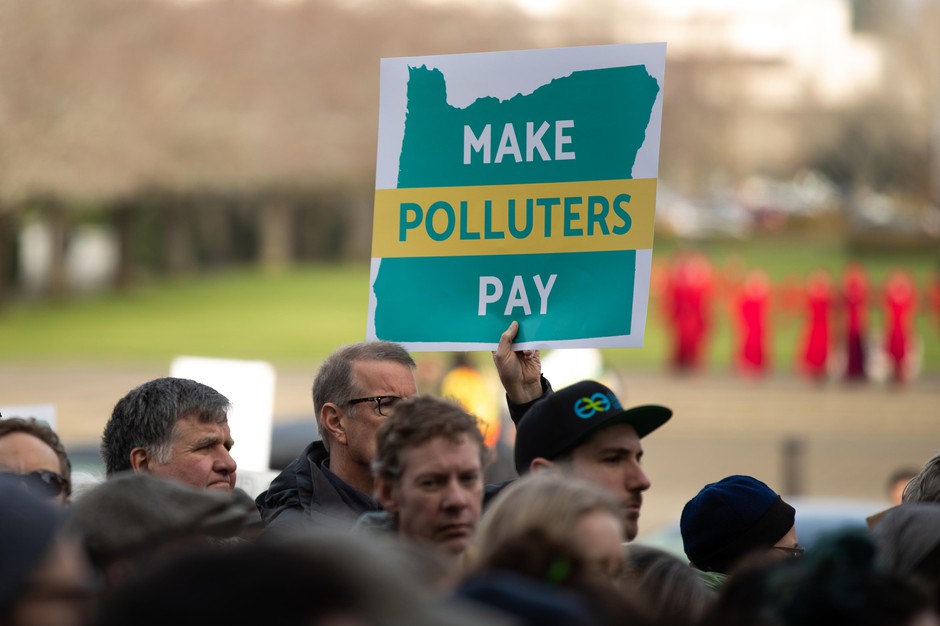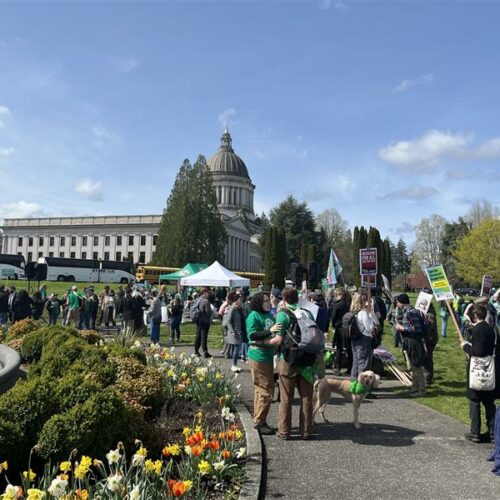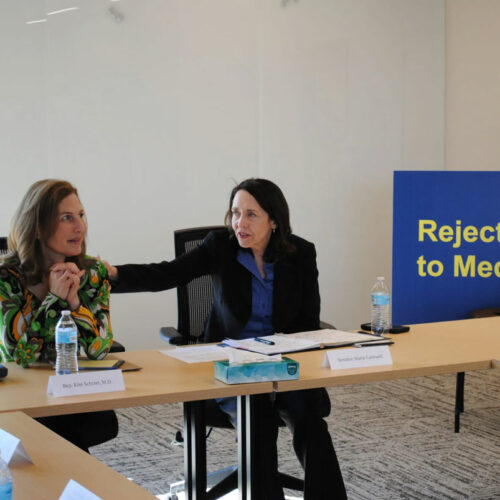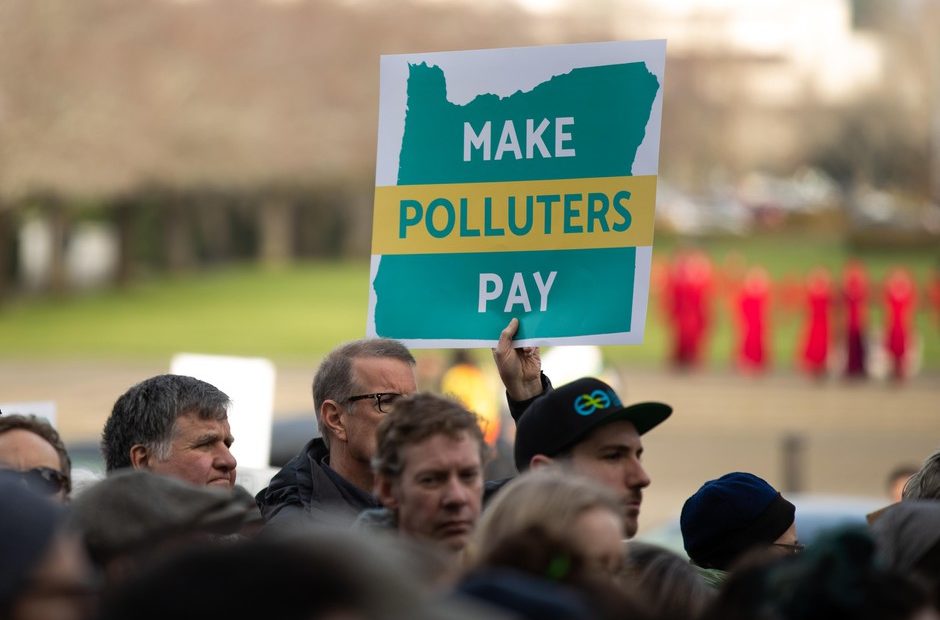
Oregon Gov. Kate Brown Promises Executive Action On Climate After GOP Legislative Walkout
READ ON
With Democrats calling an early end to the 2020 legislative session Thursday, Oregon’s climate change battle is about to shift gears.
For the second year in a row, Democrats’ signature bill for instituting a cap-and-trade system to reduce greenhouse gas emissions was stymied by a Republican walkout. Now, the focus falls on Gov. Kate Brown.
“I will not back down,” Brown said in a statement Thursday, when the fate of Senate Bill 1530 became official. “In the coming days, I will be taking executive action to lower our greenhouse gas emissions.”
The question is what that action will look like.
The executive order Brown is expected to announce in coming days could include some of the salient provisions of the cap-and-trade proposal — but not all. Because of limitations in Brown’s authority to act alone, observers and state documents indicate any system created by executive order would be less sweeping than the system laid out in the bill.
It also could be less flexible, and more expensive, for the sectors that are regulated.
“The industry’s cut off their nose to spite their face,” said Doug Moore, executive director of the Oregon League of Conservation Voters, not long after legislative leaders declared the session dead Thursday.
The specifics of the order Brown will issue aren’t yet known. The governor’s office has been fine-tuning the proclamation in preparation for an expected legal challenge.
“Our office is having conversations with the Department of Justice to ensure the governor acts as aggressively as she can within Oregon statutes,” said Kate Kondayen, a spokeswoman for Brown. “The executive order will reflect that.”
Here are some insights into what the order could entail:
- Similar goals, but different outcomes: SB 1530 would have set a cap on greenhouse gas emissions that was set to reduce over time. By 2035, for instance, the cap would have mandated that Oregon’s emissions be 45% below 1990 levels. While observers suggest that Brown’s order could adopt the same goal, it’s not clear a system she puts in place can achieve it. A briefing prepared by the Carbon Policy Office last year said the 45% goal was “likely unachievable” under an executive order. That’s not likely to deter advocacy groups, who have called on Brown to set even more aggressive reduction goals in an executive order.
- No auctions, no state revenue: The cap-and-trade system in SB 1530 would have required carbon polluters to obtain credits for their emissions, and to obtain at least a portion of them at auction, where revenues flow to the state. The system was expected to raise hundreds of millions of dollars that would be reinvested to help the state transition to lower carbon use and help mitigate the impacts of climate change. Brown’s office has said that such auctions would be off the table under an executive order, meaning those investments would, too. As with SB 1530, an executive order would require polluters to obtain credits for their emissions, the Carbon Policy Office said last year. With the number of credits provided decreasing over time, companies would still face pressure to either reduce their emissions or purchase credits from other entities. One potential issue: With no revenue, the Legislature would have to find money to run this program from other sources.
- Fewer sectors covered: SB 1530 would have applied to entities across three sectors: transportation (in the form of fuel importers), industrial, and electric and natural gas utilities. But an executive order likely can’t regulate emissions from imported electricity or in-state electricity that already is subject to carbon standards. There are other possibilities for regulating electricity, however. One ballot measure being pushed by environmental groups this year would require the state to transition to 100% carbon-free and renewable energy sources by 2045.
- Fewer emissions regulated: Because electricity wouldn’t be a factor in a system Brown ordered, her office has said an estimated 53% of emissions would be covered, as opposed to around 80% in the cap-and-trade bill.
- Lots of other options: In an analysis last year, the group Climate Solutions laid out a host of steps it believes Brown could consider with an executive order. One central idea is for Brown to ratchet up the state’s Clean Fuels Program to require fuel with a lower carbon intensity. Other possibilities include mandating efficient appliances, requiring fewer methane emissions in landfills, and changing building codes to require new construction achieve net-zero emissions.
The analysis laid out by the Carbon Policy Office last year offers one notion for an executive order — one that hews closely to the cap-and-trade program that lawmakers had envisioned. Some observers note Brown could ultimately choose to go a different direction.
According to Kondayen, with the governor’s office, the Carbon Policy Office analysis is “not comprehensive of the concepts in the current draft.”
“There are many ways to take bites out of our greenhouse gas emissions,” said Meredith Connolly, Climate Solutions’ Oregon director. “SB 1530 is like a home run, but you can also get there through many singles, doubles and triples.”
Whatever direction Brown takes, she’ll have company. In recent years, governors in Pennsylvania, Maine, New Mexico and other states have used executive orders to mandate greenhouse gas reductions.
Also in that group: Washington Democratic Gov. Jay Inslee, who saw his 2016 order capping greenhouse gas emissions by fuel companies partially dismantled by the state’s Supreme Court earlier this year.
Brown’s office has reason to be girding for similar legal hurdles. As Senate Minority Leader Herman Baertschiger Jr., R-Grants Pass, told reporters Thursday: “The lawsuit will be filed immediately.”
Ironically, the Republican walkout that killed SB 1530 — and nearly every other bill in the 2020 legislative session — could strengthen Brown’s case. That, at least, is the opinion of Dustin Buehler, the governor’s deputy general counsel.
In a Feb. 15 analysis, Buehler made the case that courts are increasingly ruling on climate change matters “in moral terms.”
The repeat Republican walkouts in recent years may persuade courts that “the Legislature is simply incapable of acting on these issues, and that the executive branch is the only branch capable of acting on climate,” Buehler wrote. “That dynamic, in turn, could make Oregon courts more comfortable upholding the validity of executive action on climate.”
Related Stories:

Ocean conditions mixed for salmon, leading to average salmon returns
NOAA biologist Brian Burke says mixed ocean conditions may lead to average salmon runs, but climate change is disrupting ecosystems—making continued research critical.
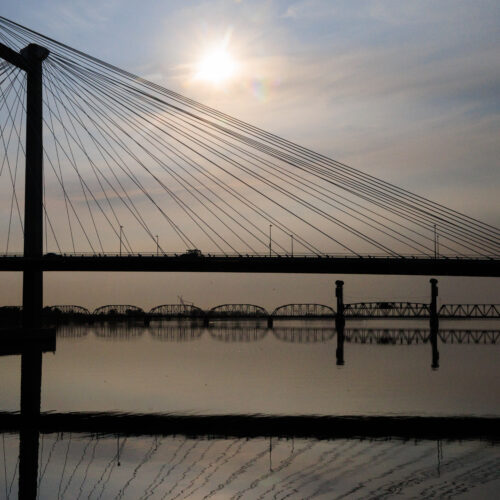
How does climate affect your life? Tri-Cities survey open now
Cities, towns and counties are starting to plan for a future with climate change. Now, the Tri-Cities area is asking people about regional hazards and historical trends. (Credit: Simon Foot

Canadian leaders hope trade negotiations won’t derail Columbia River Treaty
A view of the Columbia River in British Columbia. The Columbia River Treaty is on “pause” while the Trump administration considers its policy options. However, recent comments by President Donald

